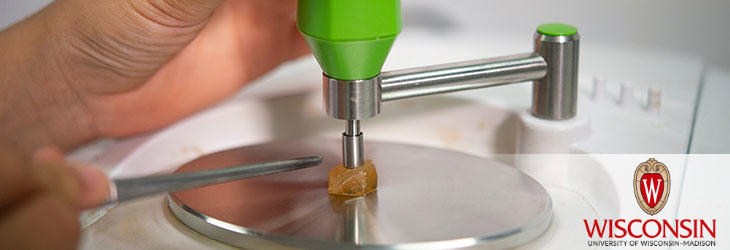Research Tools

Microwave Cavity Detector for Highly Sensitive Mass Spectrometry Detection of Large Molecules
WARF: P100106US01
Inventors: Robert Blick, Jonghoo Park
The Wisconsin Alumni Research Foundation (WARF) is seeking commercial partners interested in developing an add-on device for mass spectrometers to allow highly sensitive time and mass measurements.
Overview
Mass spectrometers are analytic instruments that precisely measure the mass of molecules, and therefore may be used to determine composition and molecule identity based on mass data. Generally, the molecules are given an electrical charge (i.e., ionized) and then accelerated by an electrical field. The velocity of their acceleration will be proportional to the mass to charge ratio, and the molecular mass may be determined using a known charge and a velocity measurement. Velocity measurements are obtained using a variety of methods including use of a “sector” type analyzer or “time of flight” analyzer.
Mass spectrometry is applied increasingly to extremely large molecules such as proteins. The large mass of protein molecules decreases the sensitivity of a time of flight spectrometer because the velocity of the proteins is lower, and therefore the difference between velocities of similar masses is less. As a result, the time of flight measurement must be obtained with higher precision. Conventional spectrometer detectors are limited by measurement delays that can hide small mass differences between large molecules, which restricts their use in proteomics research that requires highly sensitive protein mass detection. Improvement in the mass resolving power of spectroscopes is needed.
Mass spectrometry is applied increasingly to extremely large molecules such as proteins. The large mass of protein molecules decreases the sensitivity of a time of flight spectrometer because the velocity of the proteins is lower, and therefore the difference between velocities of similar masses is less. As a result, the time of flight measurement must be obtained with higher precision. Conventional spectrometer detectors are limited by measurement delays that can hide small mass differences between large molecules, which restricts their use in proteomics research that requires highly sensitive protein mass detection. Improvement in the mass resolving power of spectroscopes is needed.
The Invention
UW-Madison researchers have developed a detector for mass spectrometry that employs a tuned microwave cavity to increase the sensitivity of time measurements. The detector can be used in mass spectrometers that provide a source of ionized molecules, which are accelerated in an electric field before reaching the detector. The design includes a cavity of conductive material providing an electromagnetically tuned cavity, which includes an opening positioned to receive the accelerated molecules. An antenna communicates with the cavity to receive an electrical signal caused by electromagnetic resonance of the cavity. Detection electronics receive this electrical signal, which marks the arrival of the ionized molecule in the cavity and allows for time of flight measurement. With proper configuration of the frequency of resonance in the cavity, its modes and its quality factor, time resolutions on the order of one nanosecond are possible.
Applications
- Mass spectrometry machines used in research such as proteomics that requires highly sensitive mass detection
- Detection and analysis of molecules with large molecular mass, such as proteins
Key Benefits
- Improves sensitivity
- Improves temporal resolution
- Allows nanosecond time resolution
Additional Information
Related Technologies
Tech Fields
For current licensing status, please contact Jennifer Gottwald at [javascript protected email address] or 608-960-9854